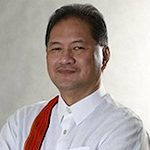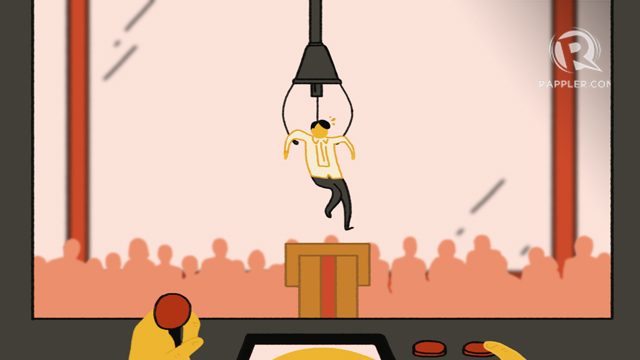SUMMARY
This is AI generated summarization, which may have errors. For context, always refer to the full article.

I’ve written a few columns on impeachment in the past but with 25 lawmakers endorsing the impeachment complaint against Chief Justice Maria Lourdes Sereno, and the Senate constituting itself as an impeachment court now a looming possibility, it is time to revisit some of my old writings on impeachment.
Comelec Chair Andres Bautista could also be impeached as well as Vice-President Leni Robredo and Ombudswoman Conchita Carpio Morales. President Rodrigo Duterte himself was charged with impeachment a few months ago, a complaint which was summarily dismissed by the House of Representatives.
In my view, impeachment has been distorted in the Philippines. It was misused against Chief Justice Renato Corona. It has become a means of first resort rather than the ultimate remedy against impeachable officials. It has replaced policy debates or legal forums as the place where differences in approaches to governance are litigated.
Yes, impeachment is a political process but it is not supposed to be a political circus. That’s how it has become in the Philippines where seasons of impeachment have become the new normal.
The nature of impeachment
As most will observe, there is unanimity among legal scholars that impeachment proceedings are a class of their own; as lawyers would say, sui generis. It is both quasi-judicial and quasi-political. Quasi-political because it is akin, but not quite, to a political proceeding undertaken by a political body which is the Senate, and quasi-judicial because it partakes of some of the elements of a criminal process without necessarily following strictly the Rules on Evidence and legal technicalities.
At most, the Rules of Procedure and the Rules of the Senate apply as a supplement to the Rules of Impeachment drawn by Congress.
Perhaps to underscore the uniqueness of the impeachment process, the Constitution has created a singular and independent body, not falling under the jurisdiction of any of the 3 great branches of the government – the executive, legislative, and the judiciary. While the members of the impeachment court are composed of senators, they do not perform their functions as legislators and politicians but on this occasion, they must assume the cold neutrality of an impartial judge.
As the members of the 1986 Constitutional Commission acknowledged, the impeachment process is essentially a political act with the sole purpose of removing the impeachable official from public office for one or more of the following grounds, as provided by Sec. 2, Art XI 1987 Constitution: culpable violation of the Constitution, treason, bribery, graft and corruption, other high crimes, or betrayal of public trust.
The most problematic of these grounds is “betrayal of public trust” which is a catch-all phrase to cover all offenses that include all acts which are not punishable by penal statutes but, nonetheless, render the officer unfit to continue in office. These grounds are exclusive and offenses not falling within these parameters shall be rendered insufficient for impeachment purposes.
Commissioner Ricardo Romulo clarified that the impeachment “procedure is analogous to a criminal trial but it is not a criminal prosecution per se,” thus the official concerned may be subject to subsequent civil and criminal prosecutions concerning the acts complained of.
Since impeachment is not a criminal proceeding per se, the principles in criminal procedure do not necessarily apply although it can involve certain judicial procedures. Thus, it is accepted that the official being impeached must be informed of the charges against him, be given the opportunity to defend himself accordingly, and be tried fairly and impartially.
Given the fact that impeachment is a political act, the power to initiate, hear, and decide upon impeachment complaints and cases is lodged in the legislative branch of government under the 1987 Constitution and its procedure specifically delineated in Section 3, Article XI of the Constitution.
The Constitution makes it unmistakably clear that the Senate, acting as an impeachment court, has the sole power to try and decide all cases of impeachment. As such the Supreme Court has no jurisdiction over it. After all, it is not one of the courts whose decisions are reviewable by the High Court.
In the United States, the decisions of the impeachment court are non-reviewable and stand as the final decision in the case. Indeed, it would be highly illogical and legally awkward for the Supreme Court to review the decisions of the impeachment court trying its highest official.
As a constitutionally created body, an impeachment court is vested with plenary powers to discharge its functions. It can enforce obedience to its orders, mandates, writs and judgments; punish in a summary way contempt of, and disobedience to, its authority; and, make such lawful orders, rules, and regulations which it may deem essential to the proper discharge of its constitutional mandate.
By its very nature, the authority of the impeachment court is well-nigh unrestricted. But it does not mean that it can do as it pleases. While the truth is its primordial consideration, the welfare of the democratic institutions should also be given utmost consideration.

The Sereno impeachment
In an Eagle Eyes column I wrote a few weeks ago, I described the possible impeachment of Chief Justice Sereno as a “fool’s errand, an attempt to do something that has no chance of success. I still think that. However, I am not naïve and know that if President Duterte is behind this effort, it will certainly clear the House of Representatives and go to the Senate for trial. There, the odds are tilted in favor of the Chief Justice.
Culpable violation of the Constitution means a specific constitutional provision was intentionally transgressed by the impeachable official. Betrayal of public trust, even if it has a broader scope, implies a seriousness that rises to the level of high crimes and misdemeanors that are also grounds for impeachment. Mistakes of judgment, especially on administrative matters and management decisions, do not rise to being impeachable. Those mistakes of judgments have not even been committed by the Chief Justice.
While the accusations against the Chief Justice cannot be trifled with, one cannot help but notice an unnerving proclivity by the present government to threaten independent institutions and officials with impeachment – thanks to the so-called “super-majority in Congress.”
Previously, Vice President Leni Robredo and Ombudsman Morales were also targeted by some quarters and threatened with impeachment supposedly for sending a video message criticizing the government’s war on drugs to the United Nations Commission on Narcotic Drugs and for supposed inordinate delays in the resolution of cases filed before the Office of the Ombudsman, respectively.
Seeing a slew of attempts to oust high ranking government officials one cannot but wonder if there is a concerted effort on the part of some quarters in the government to clear the way to some sinister political agenda, including an attempt to silence administration critics. Without pre-empting the arguments that Sereno’s camp may raise, I must say the charges are largely innuendos without factual basis and mostly touch on administrative matters, and not on the malfeasance of the Chief Justice. The goal is to embarrass and humiliate her, to cast a big net to fish for evidence against her.
Having known the Chief Justice for 41 years, when we were first year students in the Ateneo de Manila University, I can say with certainty that her persecutors will not be able to find such evidence. This is a woman of integrity, who lives simply. Yes, she is strong-willed and assertive, but she is not arbitrary and whimsical. The prosecution will only embarrass itself when this goes to trial.
Preserving the independence of the judiciary
History has illustrated how the concentration of power in one person or group with one ideology has led to abuse of power. As a result, chaos and destruction ensued. To address the ills brought about by the tyranny caused, democracy was invented. One of the bedrocks of democracy is the concept of separation of powers, which envisions the distribution of powers between the executive, legislative, and judicial branches of government. As theorized by Baron de Montesquieu, the separation allows each branch to check the others if they try to abuse their powers.
In the Philippines, our Constitution, as authored by the Filipino people, has envisioned such a state of affairs in our government. This is set forth in Article II, Section 1: The Philippines is a democratic [xxx] society. The vesting of power to a single person has been denounced, as shown in Article VI, Section 31, which prohibits any law granting title of royalty or nobility to any person. Therefore, the governmental powers were distributed to the executive branch, the legislative branch, and judiciary. Each branch was designed to be co-equal and independent in the performance of their respective unique roles – the legislative makes the law, the executive carries out the law, and the judiciary interprets the law.
The appointment of then associate justice Maria Lourdes P. A. Sereno as Chief Justice in 2012 was widely praised and celebrated as it would herald an insulation of the judiciary from the executive for 4 administrations. Chief Justice Sereno surpassed expectations with regard to her independence when she joined the majority in declaring the unconstitutionality of parts of the Disbursement Acceleration Program. In a forum, the Chief Justice was quoted as saying, “I do not serve Presidents, excuse me…. That’s unforgivable.”
Chief Justice Sereno’s refusal to serve political ends and her faithful adherence to the people’s mandate to be independent have now subjected her to political attack through the filing of baseless and frivolous impeachment complaints.
While the impeachment mechanism is meant to remove the highest ranking officials on the most serious offenses – culpable violation of the Constitution, treason, bribery, graft and corruption, other high crimes, or betrayal of public trust – it should not be abused to remove one whose ideals are not aligned with those of the other branches of the government.
The free exchange of differing ideas is essential to democracy; to force everyone to echo a single ideology would violate the constitutional principles of truth, justice, freedom, love, equality, and peace. The independence of the judiciary, as the last bastion of democracy, should be protected. – Rappler.com
Add a comment
How does this make you feel?
There are no comments yet. Add your comment to start the conversation.